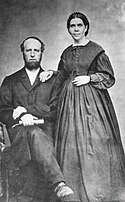That is true although they angel in Rev 18 adds to the 2nd angel
Revelation 18:1-4
(1) And after these things I saw another angel come down from heaven, having great power; and the earth was lightened with his glory.
(2) And he cried mightily with a strong voice, saying, Babylon the great is fallen, is fallen, and is become the habitation of devils, and the hold of every foul spirit, and a cage of every unclean and hateful bird.
(3) For all nations have drunk of the wine of the wrath of her fornication, and the kings of the earth have committed fornication with her, and the merchants of the earth are waxed rich through the abundance of her delicacies.
(4) And I heard another voice from heaven, saying, Come out of her, my people, that ye be not partakers of her sins, and that ye receive not of her plagues.
Notice the similarities with this and the 2nd angel
Revelation 14:8
(8) And there followed another angel, saying, Babylon is fallen, is fallen, that great city, because she made all nations drink of the wine of the wrath of her fornication.
The "three angels' messages" is an interpretation of the messages given by three angels in Revelation 14:6-12. The Seventh-day Adventist church teaches that these messages are given to prepare the world for the second coming of Jesus Christ, and sees them as a central part of its own mission. (Find out more about the beliefs of the church.)
Adventist interpretations
The Seventh-day Adventist Church has traditionally believed that it is the remnant church of Bible prophecy, and that its mission is to proclaim the three angels' messages.
Official views
"The universal church is composed of all who truly believe in Christ, but in the last days, a time of widespread apostasy, a remnant has been called out to keep the commandments of God and the faith of Jesus. This remnant announces the arrival of the judgment hour, proclaims salvation through Christ, and heralds the approach of His second advent. This proclamation is symbolized by the three angels of Revelation 14; it coincides with the work of judgment in heaven and results in a work of repentance and reform on earth. Every believer is called to have a personal part in this worldwide witness."
Fundamental Beliefs of the Seventh-day Adventist Church [2]
"In accordance with God’s uniform dealing with mankind, warning them of coming events that will vitally affect their destiny, He has sent forth a proclamation of the approaching return of Christ. This preparatory message is symbolized by the three angels’ messages of Revelation 14, and meets its fulfillment in the great Second Advent Movement today. This has brought forth the remnant, or Seventh-day Adventist Church, keeping the commandments of God and the faith of Jesus."
Seventh-day Adventist Church Manual[3]
The Mission Statement of the church declares:
"The mission of the Seventh-day Adventist Church is to proclaim to all peoples the everlasting gospel of God’s love in the context of the three angels' messages of Revelation 14:6-12, and as revealed in the life, death, resurrection, and high priestly ministry of Jesus Christ, leading them to accept Jesus as personal Saviour and Lord and to unite with His remnant church; and to nurture believers as disciples in preparation for His soon return."[4]
The image of three angels circling a globe is the church's former symbol. The current logo of the Seventh-day Adventist church has three flames encircling the globe, representing the Holy Spirit; the threefold flame is also a symbol of the three angels.[5]
Historical interpretation
According to the understanding of the Adventist pioneers, the first angel's message occurred during the two decades prior to the spring of 1844. The message of the imminent second coming of Jesus preached by the Millerite movement then fulfilled the prophecy of the first angel's message.
The second angel's message was then preached during the summer of 1844, which was preceded by a significant number of Millerites leaving the movement, and resulted in large numbers of Christians leaving their churches ("Babylon") and joining the Advent movement.[6]
The third angel's message is based on the idea that the "Seal of God" (Revelation 7:2) is the Sabbath commandment of the decalogue. Therefore, the "mark of the beast" is the opposite, or the keeping of Sunday as the Sabbath. Hence the close of the message, "here are they that keep the commandments of God." It is a point of emphasis among Adventists that the mark of the beast has not yet been given out.
(The Millerites generally interpreted "Babylon" in the Book of Revelation as the papacy, up through summer 1843. This was the position of most Protestants. Well-liked Millerite preacher Charles Fitch expanded it to include all Catholics and Protestants who rejected the Adventist teaching. His message was "Come out of her, my people", which was based on Revelation 18:2,4 (see also 14:8).
This had followed a shift in 1843 when the Millerites received more ridicule, and were increasingly disfellowshipped by their churches. The Millerites came to see themselves as a separate group, which became increasingly necessary as many were disfellowshipped.
Most of the eastern leaders did not initially accept Fitch's pronouncements, yet many lay people did. Eventually and reluctantly Joshua V. Himes came to advocate the message, in Autumn 1844. Miller never affirmed it, despite being disfellowshipped from his church.)[7]
Standard view
When Jesus did not return in 1844 as expected by the Millerite movement, the resulting Seventh-day Adventist movement came to see itself as the remnant of God and believed that their mission was to preach the three angels’ messages again.
The first angel's message is the “everlasting gospel”, namely the “good news of God’s infinite love”.
It is also a warning that the investigative judgment has begun and a call to worship the Creator of the world, specifically in the keeping of the Sabbath commandment. “The first angel’s message … calls for the restoration of true worship by presenting before the world Christ the Creator and Lord of the Bible Sabbath [which is] the sign of God’s Creation.”[8]
The second angel's message is a call to those in Babylon to “depart from her” (cf. Revelation 18:4). Adventists traditionally believe that Babylon represents the apostate church, which they identify as Roman Catholicism as well as Protestants who have rejected the truth. “This prophecy of Babylon’s fall especially finds its fulfillment in the departure of Protestantism at large from the purity and simplicity of the everlasting gospel of righteousness by faith that once so powerfully impelled the Reformation.”
This explains why Adventists often aim their evangelism at Christians in other churches as well as non-Christians. “The message of the fall of Babylon … calls on those of God’s people who are still in the various religious bodies comprising Babylon to separate from them.”[9] However, Adventists have also made it clear that there are currently many true believers in “Babylon” who worship God sincerely, including Roman Catholics.[10][11]
Theologian Ángel Manuel Rodríguez explains the mission of the remnant in terms of the second angel’s message:
“The end-time remnant is described in Revelation as having a God-given mission and a particular message to the whole world. They are to call the people of God to come out of Babylon, that is to say, to join the historical, faithful and visible end-time remnant of God.”[12]
The third angel’s message is a solemn warning against observance of Sunday as a sacred day, which Adventists have historically interpreted as the mark of the beast. “Those who reject God’s memorial of creatorship—the Bible Sabbath—choosing to worship and honor Sunday in the full knowledge that it is not God’s appointed day of worship, will receive the ‘mark of the beast.’”[13] It should be emphasised that Adventists believe that the mark of the beast will only be received at a future date, when every person on earth is made aware of their obligation to keep the Sabbath; in other words, Christians who currently worship on Sunday do not have the mark.[14]
Alternate view
Some in the more liberal wing, Progressive Adventists, typically reject the claim that the three angels' messages find unique fulfillment in the Seventh-day Adventist Church. Adventists believe that God has led the Christian movements in history,[15] but progressives tend to not put Adventism on that level. Their view may be contrasted with certain of the harsher critics who do not see God's leading behind the movement at all.
Progressive Adventists such as Steve Daily have challenged the traditional understanding of the Remnant, preferring to widen the concept to include Christians in non-Adventist churches.[12] The traditional Adventist interpretation of the mark of the beast (i.e. Sunday worship) is also rejected by many progressive Adventists.[16]
These developments necessarily call for a reinterpretation of the second and third angels' message; a widening of the remnant removes the impetus to call Christians out of Babylon and warn them against worshiping on Sunday.
Three Angels' Messages - Wikipedia, the free encyclopedia
will you never stop this charade?



